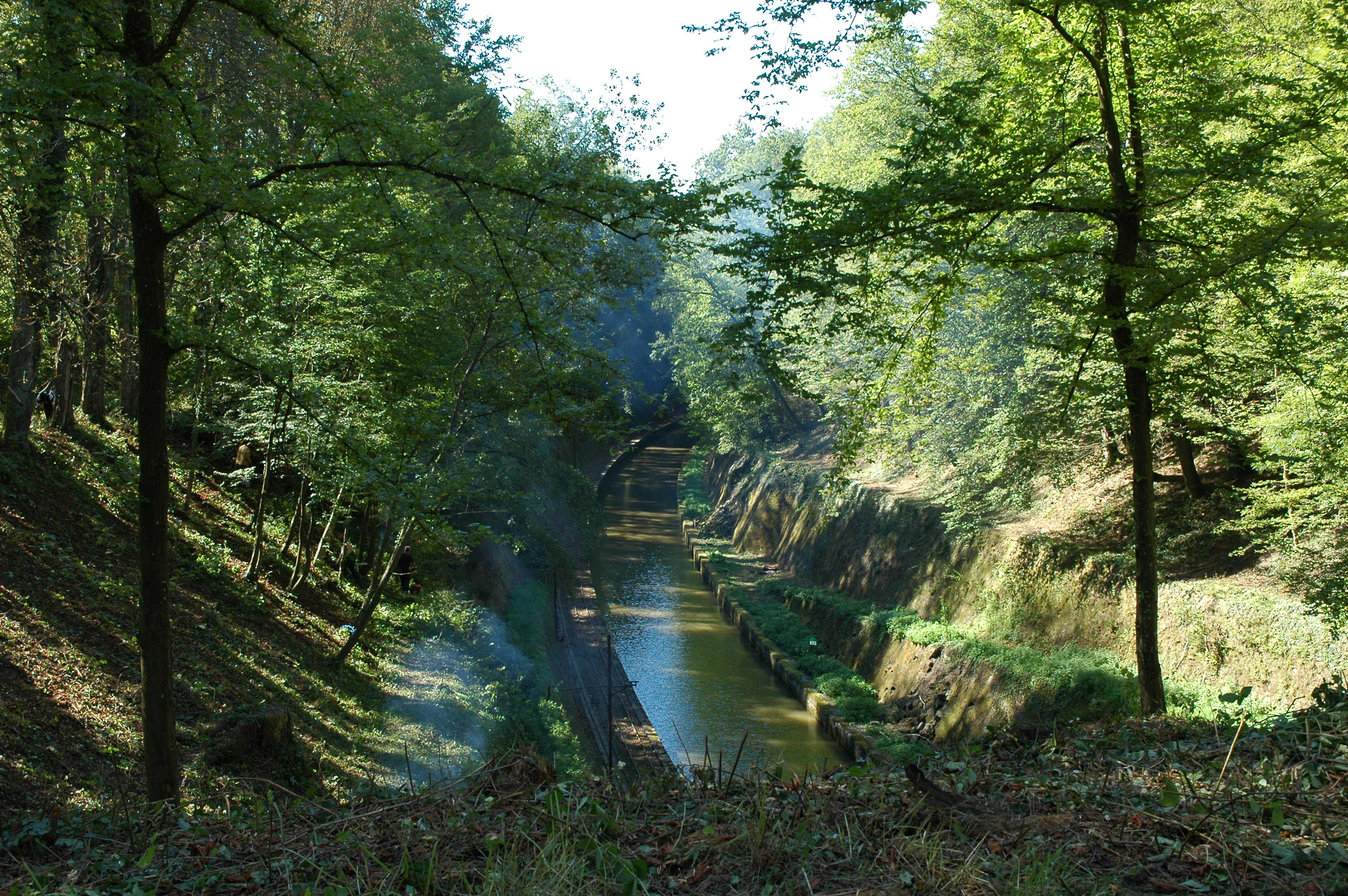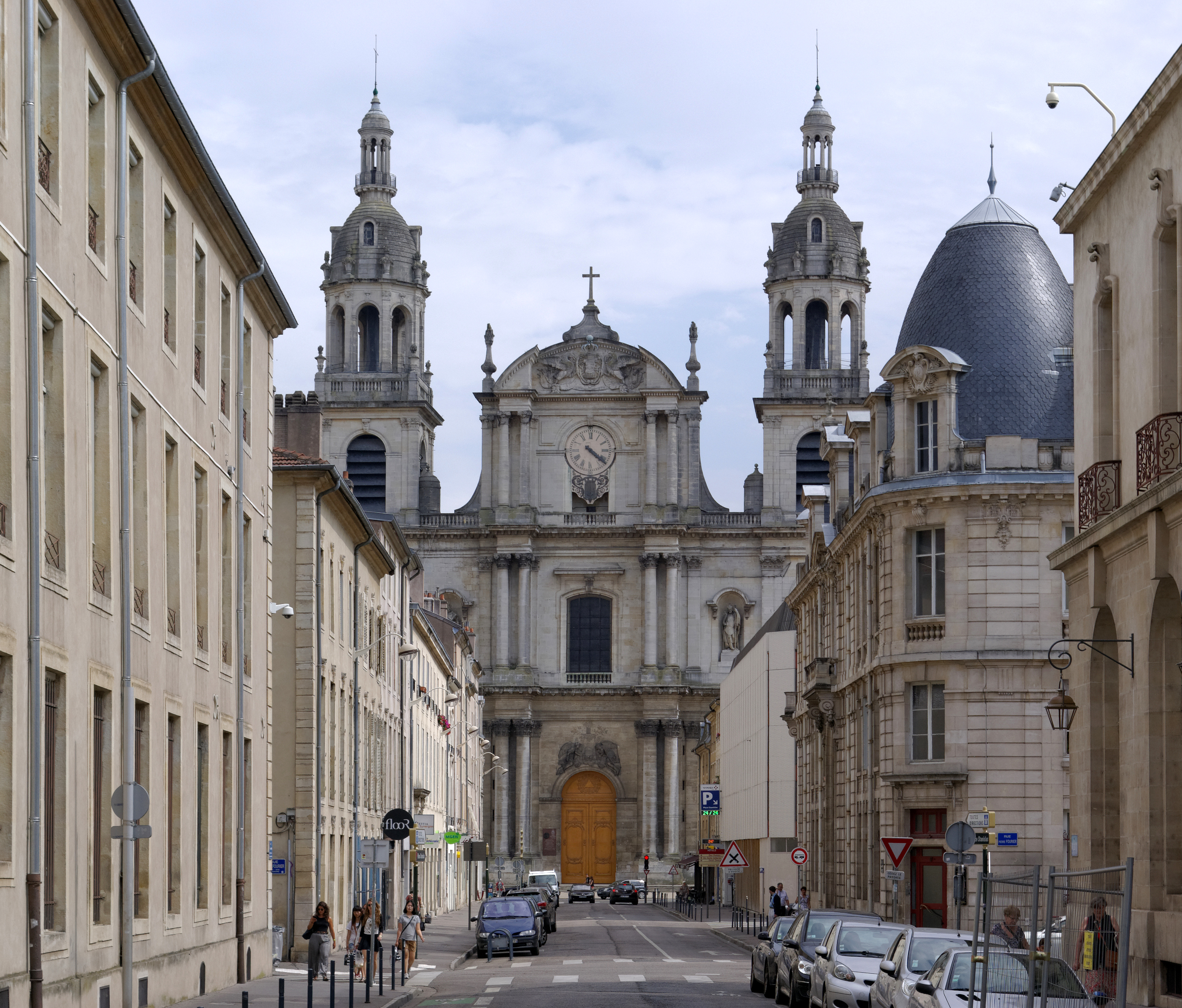|
Marne–Rhine Canal
The Canal de la Marne au Rhin (, ''Marne–Rhine Canal'') is a canal in north-eastern France. It connects the river Marne and the Canal entre Champagne et Bourgogne in Vitry-le-François with the port of Strasbourg on the Rhine. The original objective of the canal was to connect Paris and the north of France with Alsace and Lorraine, the Rhine, and Germany. The long canal was the longest in France when it opened in 1853. Description The canal is suited for small barges ('' péniches''), with a maximum size of in length and in width. It has 154 locks, including two in the Moselle. There are four tunnels. The Saint-Louis-Arzviller inclined plane is located between Arzviller and Saint-Louis and its construction replaced 17 locks. In 1979, a section along the Moselle valley was closed following the completion of the Moselle canalisation works between Frouard and Neuves-Maisons. The route is now made up as follows: * Canal de la Marne au Rhin, western section (PK 0-131), co ... [...More Info...] [...Related Items...] OR: [Wikipedia] [Google] [Baidu] |
Canal De La Marne Au Rhin Tunnel Niderviller
Canals or artificial waterways are waterways or river engineering, engineered channel (geography), channels built for drainage management (e.g. flood control and irrigation) or for conveyancing water transport watercraft, vehicles (e.g. water taxi). They carry free, calm surface flow under atmospheric pressure, and can be thought of as artificial rivers. In most cases, a canal has a series of dams and lock (water transport), locks that create reservoirs of low speed current flow. These reservoirs are referred to as ''slack water levels'', often just called ''levels''. A canal can be called a navigation canal when it parallels a natural river and shares part of the latter's discharge (hydrology), discharges and drainage basin, and leverages its resources by building dams and locks to increase and lengthen its stretches of slack water levels while staying in its valley. A canal can cut across a drainage divide atop a ridge, generally requiring an external water source abo ... [...More Info...] [...Related Items...] OR: [Wikipedia] [Google] [Baidu] |
Lock (water Transport)
A lock is a device used for raising and lowering boats, ships and other watercraft between stretches of water of different levels on river and canal waterways. The distinguishing feature of a lock is a chamber in a permanently fixed position in which the water level can be varied. (In a caisson lock, a boat lift, or on a canal inclined plane, it is the chamber itself (usually then called a caisson (engineering), caisson) that rises and falls.) Locks are used to make a river more easily navigable, or to allow a canal to cross land that is not level. Over time, more and larger locks have been used in canals to allow a more direct route to be taken. History Ancient Egypt In Ancient Egypt, the river-locks was probably part of the Canal of the Pharaohs: Ptolemy II is credited by some for being the first to solve the problem of keeping the Nile free of salt water when his engineers invented the lock around 274/273 BC. Ancient China During 960–1279 CE, the natural extension o ... [...More Info...] [...Related Items...] OR: [Wikipedia] [Google] [Baidu] |
Gondrexange
Gondrexange (; ) is a commune in the Moselle department in Grand Est in north-eastern France. Geography This municipality is located in the historic region of Lorraine and is part of the '' pays de Sarrebourg''. The Gondrexange stream has its source in the commune of Réchicourt-le-Château and flows into the Saar at Imling, after passing through seven communes. Gondrexange is part of the Lorraine Regional Natural Park. Although the commune is crossed by the Paris-Strasbourg railway line, its train station is nowadays closed. Toponymy Former names: 1240 : ''Gundersingen'', 1246: ''Guntersingen'', 1401–1402: ''Gunnedrakin'', ''Gunnedrekin'' et ''Gunedrekin'', 1460: ''Gondresenges'', ''Gunderchingen'' et ''Gundeschingen'', 1461: ''Gondressanges'', 1519: ''Gondrechingen'', 1751: ''Gunderichingen seu Gondrechanges'', 1793: ''Gondrexauge'', 1801: ''Gondrexange'', 1915–1918 et 1940–1944: ''Gunderchingen''. See also * Communes of the Moselle department * Parc naturel ... [...More Info...] [...Related Items...] OR: [Wikipedia] [Google] [Baidu] |
Nancy, France
Nancy is the Prefectures in France, prefecture of the northeastern Departments of France, French department of Meurthe-et-Moselle. It was the capital of the Duchy of Lorraine, which was Lorraine and Barrois, annexed by France under King Louis XV in 1766 and replaced by a Provinces of France, province, with Nancy maintained as capital. Following its rise to prominence in the Age of Enlightenment, it was nicknamed the "capital of Eastern France" in the late 19th century. The metropolitan area of Nancy had a population of 508,793 inhabitants as of 2021, making it the 16th-largest functional area (France), functional urban area in France and Lorraine's largest. The population of the city of Nancy proper is 104,387 (2022). The motto of the city is —a reference to the thistle, which is a symbol of Lorraine. Place Stanislas, a large square built between 1752 and 1756 by architect Emmanuel Héré under the direction of Stanislaus I of Poland to link the medieval old town of Nancy and ... [...More Info...] [...Related Items...] OR: [Wikipedia] [Google] [Baidu] |
Toul
Toul () is a Communes of France, commune in the Meurthe-et-Moselle Departments of France, department in north-eastern France. It is a Subprefectures in France, sub-prefecture of the department. Geography Toul is between Commercy and Nancy, France, Nancy, and the river Moselle and Canal de la Marne au Rhin. Climate Toul has an oceanic climate (Köppen climate classification ''Cfb''). The average annual temperature in Toul is . The average annual rainfall is with June as the wettest month. The temperatures are highest on average in July, at around , and lowest in January, at around . The highest temperature ever recorded in Toul was on 11 August 1998; the coldest temperature ever recorded was on 9 January 1985. History Toul was known to the Ancient Rome, Romans as , and was the capital of the Gaul, Gaulish tribe of the Leuci. In 550, King Theudebald convoked a Council of Toul, synod at Toul. In 612, King Theudebert II of Austrasia was defeated by King Theuderic II of Burg ... [...More Info...] [...Related Items...] OR: [Wikipedia] [Google] [Baidu] |
Meurthe-et-Moselle
Meurthe-et-Moselle () is a '' département'' in the Grand Est region of France, named after the rivers Meurthe and Moselle. Its prefecture and largest city is Nancy and it borders the departments of Meuse to the west, Vosges to the south, Moselle and Bas-Rhin and it borders the Belgian province of Luxembourg and the country of Luxembourg by the canton of Esch-sur-Alzette to the north. It had a population of 733,760 in 2019.Populations légales 2019: 54 Meurthe-et-Moselle INSEE History Meurthe-et-Moselle was created in 1871 at the end of the from the parts of the former departments of[...More Info...] [...Related Items...] OR: [Wikipedia] [Google] [Baidu] |
Void-Vacon
Void-Vacon () is a commune in the Meuse department in Grand Est in north-eastern France. See also *Communes of the Meuse department The following is a list of the 499 Communes of France, communes of the Meuse (department), Meuse Departments of France, department of France. The communes cooperate in the following Communes of France#Intercommunality, intercommunalities (as of ... References Voidvacon Three Bishoprics {{Meuse-geo-stub ... [...More Info...] [...Related Items...] OR: [Wikipedia] [Google] [Baidu] |
Ligny-en-Barrois
Ligny-en-Barrois () is a commune in the Meuse department in Grand Est in north-eastern France. The town is in the arrondissement of Bar-le-Duc, beside the canal that links the rivers Rhine and Marne, fifteen kilometres to the south east of Bar-le-Duc: it is the administrative seat of the canton of Ligny-en-Barrois. The area of Ligny-en-Barrois is 32.26 km2. A principal employer is the French Evobus motor bus assembly plant. Ligny is also the home town of the Essilor company which specialises in ophthalmic lens production. Population The inhabitants are called ''Linéens'' in French. Twin towns – sister cities Ligny-en-Barrois is twinned with: * Aichtal, Germany (1998) See also *Communes of the Meuse department The following is a list of the 499 Communes of France, communes of the Meuse (department), Meuse Departments of France, department of France. The communes cooperate in the following Communes of France#Intercommunality, intercommunalities (as of . ... [...More Info...] [...Related Items...] OR: [Wikipedia] [Google] [Baidu] |
Bar-le-Duc
Bar-le-Duc (), formerly known as Bar, is a commune in the Meuse département, of which it is the capital. The department is in Grand Est in northeastern France. The lower, more modern and busier part of the town extends along a narrow valley, shut in by wooded or vine-clad hills, and is traversed by the Ornain, which is crossed by several bridges. It is bordered on the north-east by the Marne–Rhine Canal and on the south-west by a small arm of the Ornain called the ''Canal des Usines'', on the left bank of which the upper town (''Ville Haute'') is situated. The highly rarefied Bar-le-duc jelly, also known as Lorraine jelly, is a spreadable preparation of white currant or red currant fruit preserves. First mentioned in the historical record in 1344, it is also colloquially referred to as "Bar caviar". History Bar-le-Duc was at one time the seat of the county, from 1354 the Duchy of Bar. Though probably of ancient origin, the town was unimportant until the 10th cent ... [...More Info...] [...Related Items...] OR: [Wikipedia] [Google] [Baidu] |
Meuse (department)
Meuse () is a department in northeast France, named after the River Meuse. Meuse is part of the current region of Grand Est and is landlocked and borders by the French departments of Ardennes, Marne, Haute-Marne, Vosges, Meurthe-et-Moselle, and Belgium to the north. Parts of Meuse belong to Parc naturel régional de Lorraine. It had a population of 184,083 in 2019.Populations légales 2019: 55 Meuse INSEE Front lines in during ran varying courses through the department and it hosted an important battle/offensive in 1916 ... [...More Info...] [...Related Items...] OR: [Wikipedia] [Google] [Baidu] |
Marne (department)
Marne () is a department in the Grand Est region of France. It is named after the river Marne which flows through it. The prefecture (capital) of Marne is Châlons-en-Champagne (formerly known as Châlons-sur-Marne). The subprefectures are Épernay, Reims, and Vitry-le-François. It had a population of 566,855 in 2019. The Champagne vineyards producing the eponymous sparkling wine are in Marne. Name The department is named after the Marne, which was called ''Matrona'' in Roman times. History Marne is one of the original 83 departments created during the French Revolution on March 4, 1790. It was created from the province of Champagne. Marne has a long association with the French Army. The training ground of the ''Camp Militaire de Mailly'' straddles the border with the département of Aube in the south while that of the ''Camp de Mourmelon'' occupies a large area north of Châlons-en-Champagne. The smaller ''Camp de Moronvilliers'' lies to the east of Reims and the ... [...More Info...] [...Related Items...] OR: [Wikipedia] [Google] [Baidu] |
Departments Of France
In the administrative divisions of France, the department (, ) is one of the three levels of government under the national level ("territorial collectivity, territorial collectivities"), between the Regions of France, administrative regions and the Communes of France, communes. There are a total of 101 departments, consisting of ninety-six departments in metropolitan France, and five Overseas department and region, overseas departments, which are also classified as overseas regions. Departments are further subdivided into 333 Arrondissements of France, arrondissements and 2,054 Cantons of France, cantons (as of 2023). These last two levels of government have no political autonomy, instead serving as the administrative basis for the local organisation of police, fire departments, and, in certain cases, elections. Each department is administered by an elected body called a departmental council (France), departmental council ( , ). From 1800 to April 2015, these were called gene ... [...More Info...] [...Related Items...] OR: [Wikipedia] [Google] [Baidu] |





